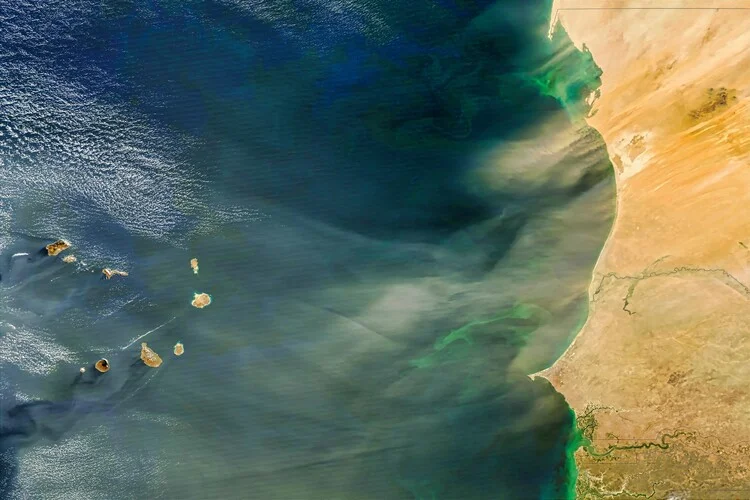
Iron that binds to Saharan dust becomes more bioreactive the further it travels, helping marine life thousands of kilometres away, new study finds
By
A new study has discovered that Saharan dust plays a significant role in the survival of oceanic life and in turn, the betterment of the planet’s climate.
Iron is a crucial nutrient for organisms in the sea, like phytoplankton – who store carbon in the same way as wood from trees – in order to produce energy and survive. Although iron is fed into oceans through various ecosystems such as rivers and melting glaciers, as well as wind activity, not all chemical forms of it are able to be taken up by phytoplankton. In other words, much of this iron is not bio-reactive.
But recent research has shown that the iron bound to dust from the Sahara is not only bio-reactive, but becomes more so the further distance it travels. This spells good news for phytoplankton who can use the nutrient in their carbon-fixing processes.

‘Our results suggest that during long-distance atmospheric transport, the mineral properties of originally non-bioreactive dust-bound iron change, making it more bioreactive,’ said professor at the University of California at Riverside and the study’s author, Dr Timothy Lyons. ‘This iron then gets taken up by phytoplankton before it can reach the bottom.’
The discovery was made after analysing four drill cores from the bottom of the Atlantic Ocean, based on their distance from the Sahara-Sahel Dust Corridor, a range from Mauritania to Chad that is known to be a vital source of dust-bound iron. By studying the upper 60-200 metres of these cores, scientists were able to measure iron concentrations over the last 120,000 years.
They found that a greater proportion of bioreactive iron had been lost from the dust and presumably been used by organisms in the water column, so it never reached the sediments at the bottom (and, therefore, was not present in the cores sampled).
‘We conclude that dust that reaches regions like the Amazonian basin and the Bahamas may contain iron that is particularly soluble and available to life, thanks to the great distance from North Africa, and thus a longer exposure to atmospheric chemical processes,’ said Lyons.
Saharan dust
From interfering with the atmosphere, either by cooling or heating it, or interacting with the formation of clouds and tropical cyclones, the Sahara’s dust is small but mighty.
182 million tons of dust is blown from the Sahara desert each year – equivalent to more than 689,000 semi trucks full of dust – and is transported towards the Caribbean via trade winds. It is most likely to travel during spring, summer and early autumn, when the Saharan Air Layer forms and crosses the Atlantic.
One major role that Saharan dust plays is in the Amazon Rainforest, where phosphorous–containing dust from the Bodélé Depression in Chad blows over and supports plant growth. Without this, phosphorous levels in soil would deplete and have a detrimental effect on the future of the Amazon.
However, significant desert storms can also bring about vast quantities of dust resulting in worse air quality, lower solar energy production and damaging effects to public health. This year, desert storms in the Sahara lead to high dust concentrations in the Iberian Peninsula, and in some parts of France and Germany.




